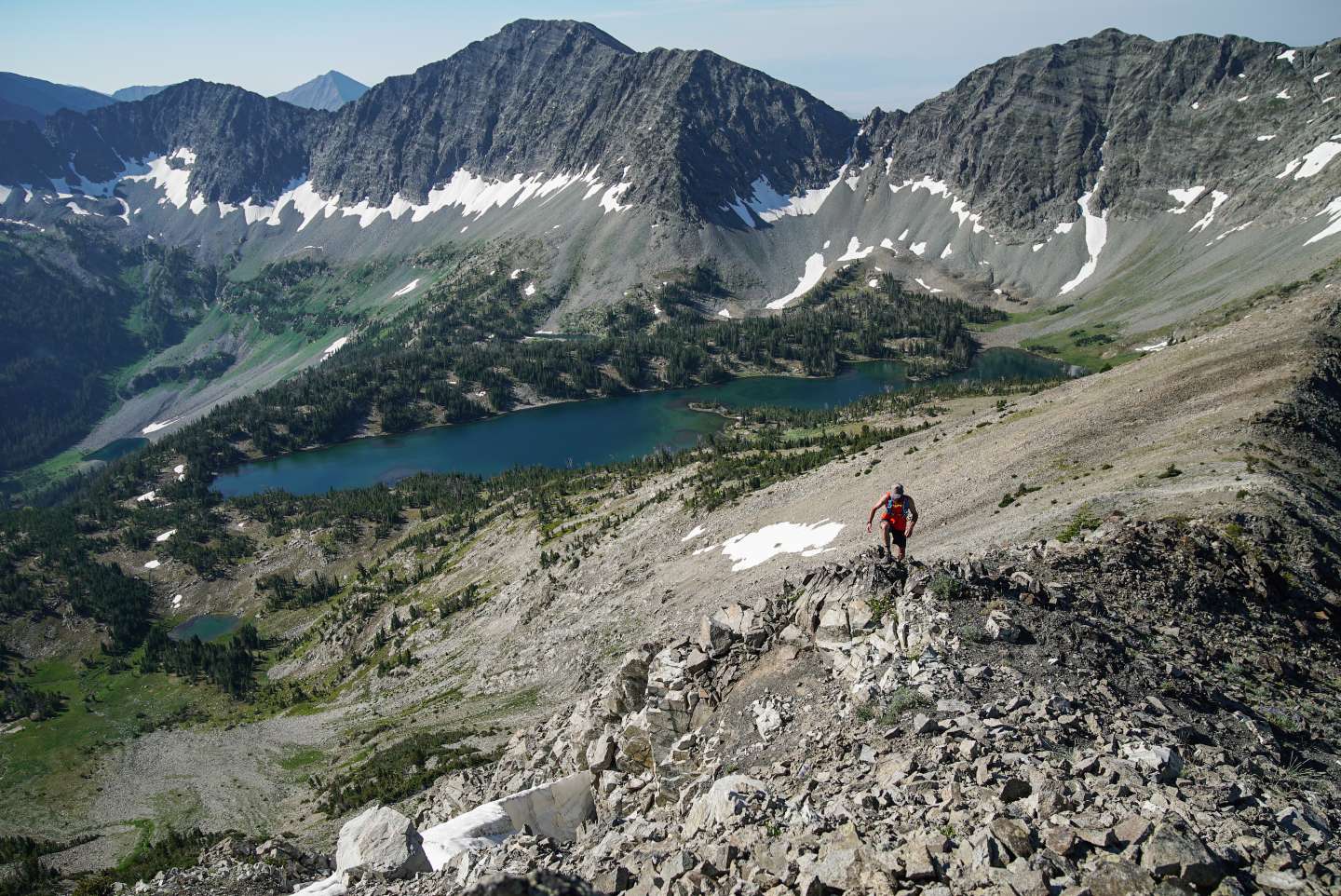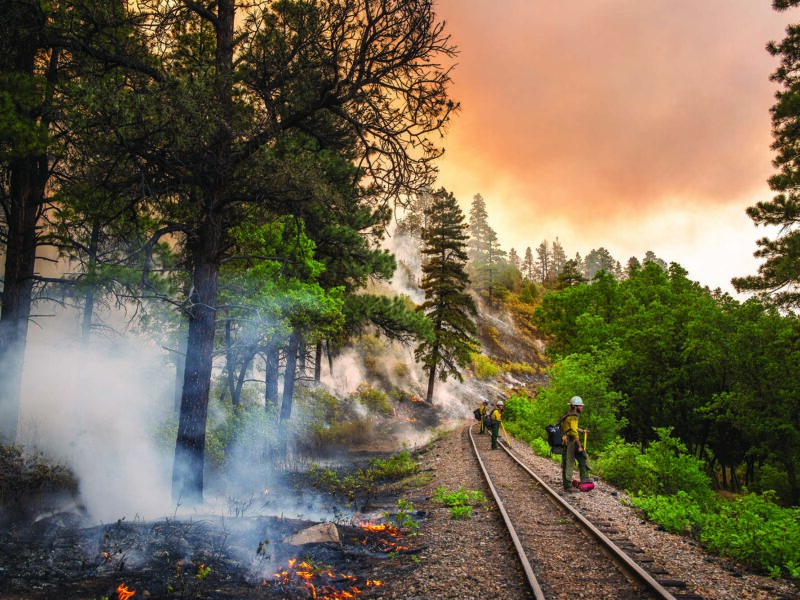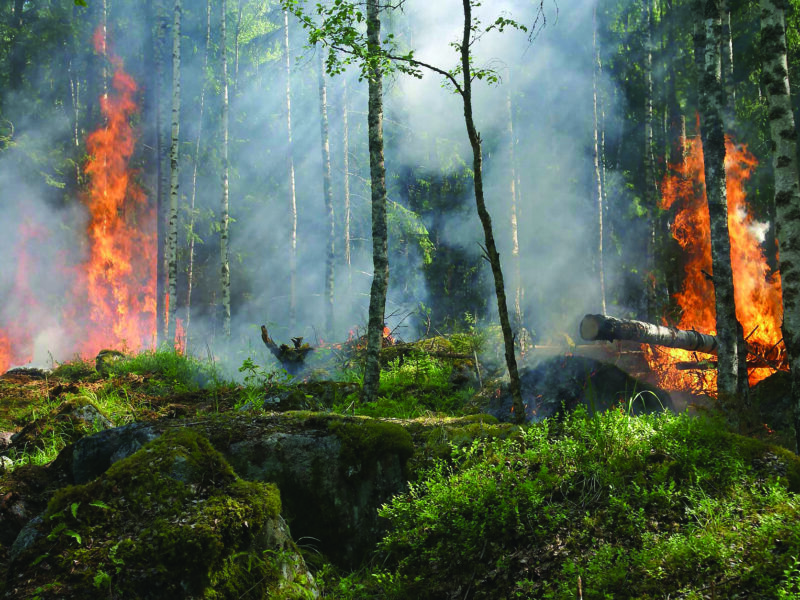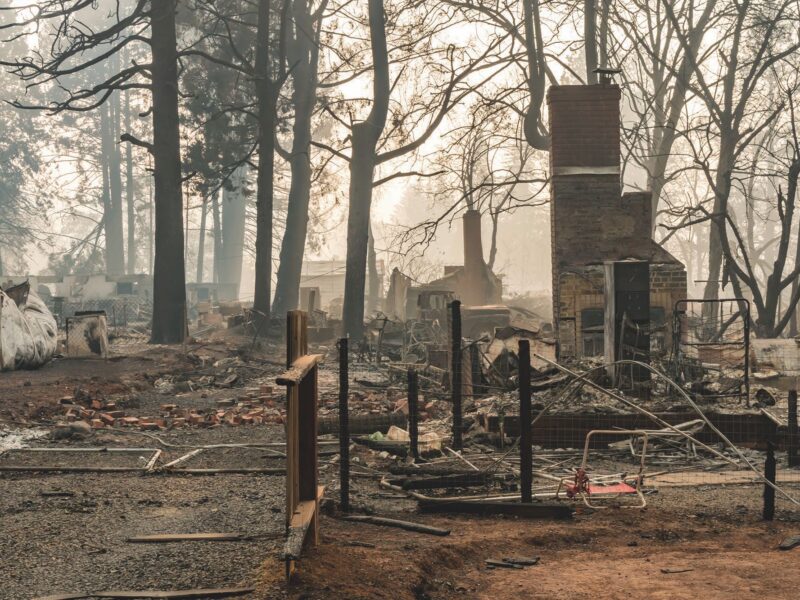Racing to connect the dots: The Crazy Mountain 100
A handful of half-naked people are lying in the creek on the Berg Ranch, near Lennep, Montana. They are exhausted, dirty, sore and grinning.
Rancher Kari Marks is smiling too, though she is trying not to gawk. The sight of these people appreciating the water her family ranch protects is a sign that the hundreds of vehicles parked in her hay field may have been worth it.
It’s July 2022 and the Berg Ranch is hosting the finish of America’s newest ultramarathon, the Crazy Mountain 100. The tired people in Marks’s stretch of creek have just completed the grueling 100-mile long trail run north along the spine of the Crazy Mountains—the first official 100-miler in Montana.
The starting line was on the Westling Ranch in Wilsall, Montana. In between the Westling and Berg ranches, runners covered some of the most rugged and remote terrain in Montana: what race founder and director Megan DeHaan describes as “a little Switzerland. The peaks just come out of nowhere. No ridgeline makes any sense. It’s its own little island of mountain.”
DeHaan is an ultra-runner, a bow hunter and a Montana cattle rancher. “Cattle ranchers usually don’t get along with public land enthusiasts. Public land enthusiasts usually don’t get along with hunters,” she says, explaining her motivations for starting the race. “I’ve found myself in a weird mixture of people groups. A lot of ultra-runners are very very vegan. Very disconnected from agriculture.” DeHaan recognized an opportunity to find common ground across her different worlds.
This is ultimately the point of the Crazy Mountain 100. While DeHaan broke even financially in year one, the race is not intended to be a money maker. “It’ll never have more than 300 runners,” DeHaan says. Instead, it’s about story-telling and connection. For instance, DeHaan serves beef raised on her family’s ranch at the finish line, to “help start a conversation.”
Marks’s participation is focused on those conversations and connections, too.
“I want people to put their feet on my land so that they are reassured that this is the way that ranchers do it.”
Kari Marks
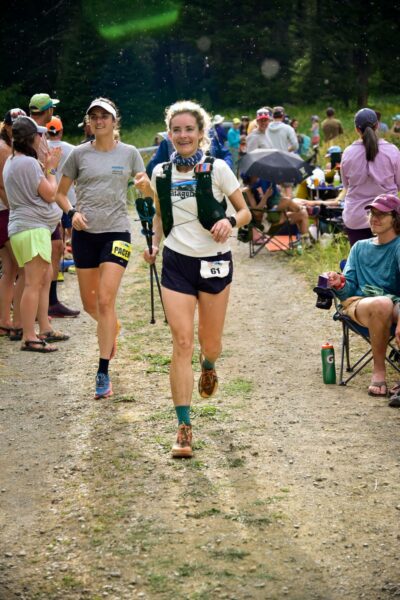
That’s especially important when it comes to the intersection between private and public land, which many public land users don’t understand. As the recreation industry grows and more people venture further out, encounters with public lands grazing are likely increasing too. “Some people were complaining about fresh cow turds in a pasture they were running through,” DeHaan recounts. That provided an opportunity for conversation, and understanding.
“The thing I really appreciate about Megan organizing that race, is that she comes from the same perspective I do,” says Marks, who is co-organizer of the Montana Cattle Women’s Montana Ranch Run, an annual 25-mile jaunt across several ranches and parts of the Lewis and Clark National Forest in the Musselshell Valley. “She’s tried really hard to paint a picture for [the participants] about the land and how it has been used.”
But the education cuts both ways, DeHaan says: “We can have this 100-mile race and the landowners can see that not all ultra-runners are jerks.” Providing access to or through private land doesn’t have to be a problem as Marks and DeHaan have learned by participating in many long runs themselves. “I have the perspective of giving the people the opportunity until they blow it. If you give off the vibe that you give the public the benefit of the doubt, they usually do pretty well,” says Marks.
A RELIGIOUS EXPERIENCE
As the lone runner plods up, the vast expanse of scree beneath her makes every step a balancing act. The sunrise has just started to transmit a pink glow onto the faces of the towering peaks of the Crazy Mountains. A soft mist rises from the silent pines below. This is the sort of moment ultra-running was built on: being way out there in the timeless stillness of nature.
“Regardless of if you’re religious or not, I swear this is where you find Jesus,” DeHaan says. “It’s easier to see things with a different perspective when your limits are pushed that far.” For DeHaan and Marks, that kind of eye opening is why they fell in love with running, and why they believe it is such a good fit for what they are hoping to accomplish with the race.
Before the starting gun goes off, the racers are a captive audience. DeHaan’s friend, Shane Doyle, an Apsáalooke scholar, teacher and community advocate, sings a welcome song in Apsáalooke that connects the course to the native people who have stewarded it for millennia.
“Being able to run through native lands, public land, generational ranches, [it shows people that] it’s all part of a bigger landscape.”
Megan DeHaan
“We can go back into the history of the range, and how it benefits everyone to protect it.” Song and words are the preface, but the experience they are about to endure is what will make them so powerful.
The 73 people who crossed the finish line of the inaugural race, out of 129 who started in Wilsall, earned some serious bragging rights. The first, and so far only, organized 100-miler in the Treasure State is setting precedent. The Crazy Mountain 100 is one of the “top five hardest hundreds you could run,” claims DeHaan. Participants also earned an inside look at the complex and interconnected landownership matrix of Montana, improbable friendships and a deeper appreciation for the beauty and importance of working lands in the West.


